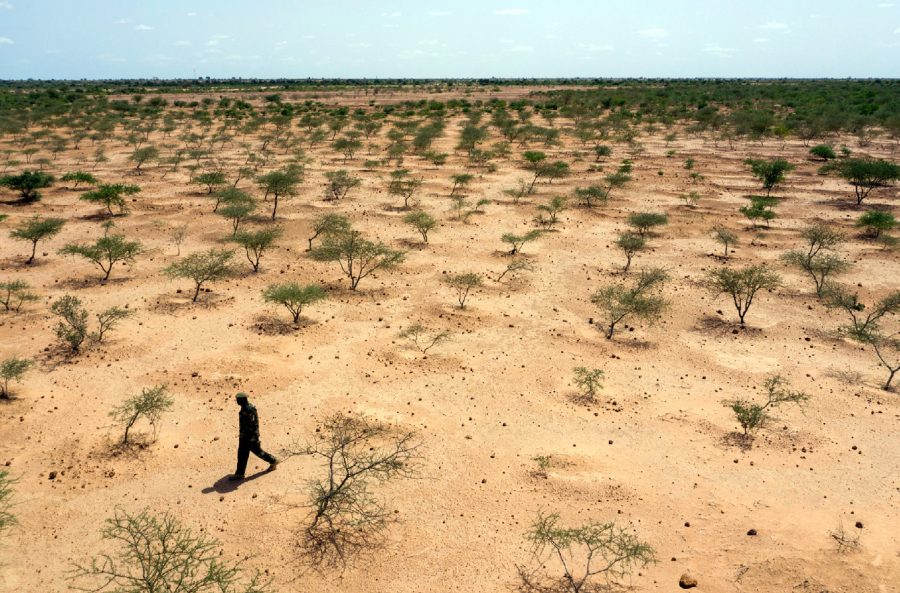Research news from the Ecological Society of America’s journals
March 25, 2024
For Immediate Release
Contact: Mayda Nathan, gro.asenull@adyam
The Ecological Society of America (ESA) presents a roundup of five research articles recently published across its six esteemed journals. Widely recognized for fostering innovation and advancing ecological knowledge, ESA’s journals consistently feature innovative and impactful studies. This compilation of papers explores invasive possum management in New Zealand, afforestation on global rangelands, population regulation in large herbivores and more, showcasing the Society’s commitment to promoting cutting-edge research that furthers our understanding of the natural world.
From Ecological Applications:

A new Ecological Applications study examines how well urban areas serve as a barrier to invasive brushtail possums in New Zealand.
Image credit: Charlotte Patterson
Invasive mammal high-tails it through urban barrier
Author contact: Charlotte R. Patterson (moc.liamgnull@nsrttaprc)
Iconic though they may be in their native Australia, brushtail possums are far less venerated in neighboring New Zealand, where the introduced marsupial not only poses a threat to native species but also serves as a reservoir for bovine tuberculosis. While eradication is an increasingly popular approach for removing non-native nuisances like brushtails, such efforts are often undermined by reinvasion of individuals from nearby populations. In this study, researchers in New Zealand investigated the effectiveness of different approaches to eliminating brushtails from the Otago Peninsula, a large landmass abutting the city of Dunedin. Although the urban environment was believed to block the tree-dwelling possums from moving back onto the peninsula following culling, modeling instead indicated that recolonization would occur, albeit at varying rates under different scenarios, unless three specific conditions were met: brushtails were completely removed from the peninsula, a buffer zone was established at the peninsular base, and populations in surrounding areas were subjected to control measures. Based on their analysis, the authors conclude that, although landscape features like cities have the potential to act as barriers to reinvasion, supplementary actions are likely needed to minimize the risk of reinvasion from adjacent populations. Moreover, they add, the results underscore the critical need for further research on the behavior and movement of introduced species—particularly non-native mammals—in urban systems.
Read the article: Eradicating an invasive mammal requires local elimination and reduced reinvasion from an urban source population
From Ecological Monographs:
For large herbivores, it’s what you eat, not how much
Author contact: N. Thompson Hobbs (ude.etatsolocnull@sbboh.mot)
Variation in food quality and not quantity could explain why large herbivores’ growth rates fall as population density increases, according to a new study. Decreased food availability was long assumed to drive poorer body condition as herbivore abundance increased—the more grazers or browsers, the less there is to graze or browse—but recent research has shown that herbivores consume essentially the same amount of plant material regardless of fluctuations in plant biomass. To account for this discrepancy, this study developed a model exploring interactions between herbivore population dynamics and plant biomass and the roles these relationships play in the processes that control populations of these animals. Model outputs suggested that herbivores in large populations face a scarcity of high-quality food, sapping their nutrition even if they eat as much as ever. The results of the study offer new insights into the density-dependent processes that keep large herbivore populations in check.
Read the article: A general, resource-based explanation for density dependence in populations of large herbivores
From Frontiers in Ecology and the Environment:
Memory a close match for monitoring
Author contact: Leandro Castello (ude.tvnull@ordnael)
All societies rely on the exploitation of natural resources to one extent or another, but in many parts of the world, resource monitoring is inconsistent, rare or absent altogether. Faced with a lack of hard data, ecologists are increasingly turning to a more direct approach: simply asking hunters and fishers themselves about the size and composition of their catches in years past. But how trustworthy are individual and collective memories as sources of information about bygone conditions? To address this question, an international team of scientists tested the accuracy of resource-user recall by comparing the recollections of fishers to observed catch data in 24 artisanal and industrial fisheries along the coast of Brazil. Analysis of the 396 survey responses revealed that fisher recall closely matched that of data collected by conventional methods, with reasonable accuracy maintained for as far back as 39 years. The authors point out that traditional knowledge holds several advantages over conventional science, such as increased trust by local communities and more buy-in for hunting and fishing restrictions. These findings led the authors to conclude that harvest recall by hunters and fishers represents a largely untapped reservoir of information about historical resource use, particularly in areas where such data are lacking.
Read the article: Local knowledge reconstructs historical resource use

A new article in Frontiers in Ecology and the Environment questions the value of tree planting on global rangelands.
Image credit: DAWNING/N Parisse, from Briske et al., 2024 | CC BY-NC 4.0 DEED
Carbon, carbon on the range
Author contact: David D. Briske (ude.umatnull@eksirbd)
Replacing large segments of the world’s open rangelands with forests to help mitigate climate change—otherwise known as afforestation, a process often described as a “natural climate solution” (NCS)—may do more harm than good, argue the authors of a recent study. While forestlands do soak up and store enormous amounts of carbon, the authors dispute the notion that afforestation of rangelands would result in significant increases in carbon retention, pointing out that gains in aboveground carbon storage through the presence of more trees would be largely offset by concomitant losses in soil carbon, a particularly stable form of carbon storage. This misconception is just one of several that, the authors contend, inflate expectations for afforestation programs. Moreover, they note, in exchange for only small gains in carbon storage, loss of rangelands would severely curtail the numerous local- to global-scale ecosystem services these environments offer, including crop and livestock production and biodiversity conservation. Given the limited value of the benefits of rangeland afforestation, the authors propose that promoting retention of the vast stores of belowground carbon through preservation of global rangelands would be the most effective NCS strategy for climate-change mitigation efforts in these unique ecosystems.
Read the article: Rangeland afforestation is not a natural climate solution
From Ecosphere:

A recent study in Ecosphere reveals that wood turtles—or their predators—show signs of handedness.
Image credit: Matthew Chatfield, from Honan et al., 2024 | CC BY 4.0 DEED
Wood turtles show their good side
Author contact: Caroline Honan (ude.uslnull@nanohc)
Sea turtles use their right flipper to dig nests, snakes tend to coil in one direction, various lizards predominantly lean to the left; even a 289-million-year-old fossil reptile preferred to chew with the right side of its mouth. Surprisingly, however, little research has focused on how this bodily bias is important for reptiles. While examining photographs of the shells of 159 wood turtles, researchers in the US noticed a peculiar pattern that could provide further insight into handedness—technically, “lateralized behavior”—in these reptiles: cracks, dents, chips, and other forms of damage appeared to be more prevalent on the right side of turtle carapaces than on the left. Further analysis revealed that of the 234 damaged shell scutes on 60 individual turtles, significantly more occurred on the right side of the body than on the left. To account for this lopsidedness, the authors propose that turtles may preferentially turn to their left as a defensive posture when facing predators, or perhaps respond more quickly to threats originating from their left side. Turtles may also favor right-hand turns, resulting in their right sides more frequently banging or scraping against rocks and other hard objects in their environment. Alternatively, asymmetrical shell damage may have little to do with turtle behavior at all, instead reflecting handedness in one or more of their predators. Whatever the cause, the study underscores the interplay between biology and behavior and the ubiquity of righties and lefties in nature.
Read the article: Evidence of handedness in turtles
###
The Ecological Society of America, founded in 1915, is the world’s largest community of professional ecologists and a trusted source of ecological knowledge, committed to advancing the understanding of life on Earth. The 8,000 member Society publishes six journals and a membership bulletin and broadly shares ecological information through policy, media outreach, and education initiatives. The Society’s Annual Meeting attracts 4,000 attendees and features the most recent advances in ecological science. Visit the ESA website at https://www.esa.org.
Follow ESA on social media:
Twitter/X – @esa_org
Instagram – @ecologicalsociety
Facebook – @esa.org